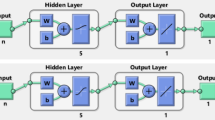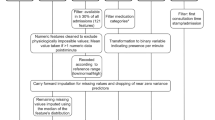Abstract
Demands for health care reform will increase service utilization, much of which will fall on a system of expanded primary care providers, many of whom will not be specialists in psychiatry. These providers will need tools to augment their decision-making process. In this paper, we explore the use of Artificial Neural Networks (ANNs) in three different field sites to predict inpatient psychiatric Length-Of-Stay (LOS). This study describes the development and implementation of a runtime system in three different psychiatric facilities. Data was collected at these respective sites using the runtime system, and then this data was used to retrain the networks to determine if site-specific data would improve accuracy of prediction of LOS. The results indicate that ANNs trained with state hospital data could accurately predict LOS in two different community hospital psychiatric units. When the respective ANNs were retrained with approximately 10% new data from these specific hospitals, rates of improvement ranged from 3% to 15%. Our findings demonstrate that an ANN can adapt to different treatment settings and, when retrained, significantly improve prediction of LOS. Prediction rates by the ANN after retraining are comparable to results of a clinical team.
Similar content being viewed by others
References
Choca JP, Peterson CA, et al. Problems in using statistical models to predict psychiatric length of stay; an illustration.Hosp Community Psychiatry 1988; 39:195.
Cyrr JJ, Haley GA. Use of demographic and clinical characteristics in predicting length of psychiatric hospital stay: a final evaluation.J Consult Clin Psychol 1983; 51:637–640.
Kirshner LA. Length of stay of psychiatric patients: a critical review and discussion.J Nerv Ment Dis 1982; 170:27–33.
De Francisco D, Anderson D, Tantano R, Kline F. The relationship between length of hospital stay and rapid-readmission rates.Hosp Community Psychiatry 1980; 31:196–197.
Gordon RE, Vijay J, Sloate SG, Burket R, Gordon KK. Aggravating stress and functional level as predictors of length of psychiatric hospitalization.Hosp Community Psychiatry 1985; 36:773–774.
Caton CL, Gralnick A. A review of issues surrounding length of psychiatric hospitalization.Hosp Community Psychiatry 1987; 38:858–863.
Davis G, Lowell W, Davis G. Using neural networks as decision support in predicting psychiatric length of stay.MD Comput 1993; 10:1–6.
Lowell W, Davis G. Predicting length of stay for psychiatric diagnostic related groups using an artificial neural network.J Medical Informatics, November-December, 1994; 1(6):459–466.
Tu J, Guerriere R. Use of a neural network as a predictive instrument for length of stay in the intensive care unit following cardiac surgery.Computers and Biomedical Research 1993; 26:220–229.
Baxt WG. Use of an artificial neural network for the diagnosis of myocardial infarction.Ann Intern Med 1991; 115:843–844.
Somoza E, Somoza J. A neural network to predict admission decisions in a psychiatric emergency room.Medical Decision Making, Oct-Dec, 1993; 13(4): 273–280.
Modai I, Stoler M, Inbar-Saban N, Saban N. Clinical decisions for psychiatric inpatients and their evaluation by a trained neural network.Methods of Information in Medicine, 1993; 32:369–373.
Johnson R, Brown C.Cognizers — Neural Networks and Machines That Think, John Wiley, New York; 1988.
Lawrence J.Introduction to Neural Networks, Third edition, California Scientific Software, 1991.
Sejnowski T, Rosenberg C. Net-Talk: a parallel network that learns to read aloud.Johns Hopkins University Technical Report JHU/EECS–86/01, 1986.
Caudill M, Butler C.Naturally Intelligent Systems, MIT Press, Cambridge, MA, 1990.
Admit DJ.Modeling Brain Function: the World of Attractor Neural Networks, Cambridge University Press, 1989.
Buchman T, Kubos K, Seidler A, Siegforth M. A comparison of statistical and connections models for the predictions of chronicity in a surgical intensive care unit.Critical Care Medicine 1994; 22(5):750–762.
Klimasauskas C. Applying neural networks, part 2.PC AI 1991; March–April:27–34.
Spitzer R, Williams J.Diagnostic and Statistical Manual of Mental Disorders, Third edition — Revised, American Psychiatric Association, Washington, DC, 1987.
Brainmaker Professional — Neural network simulation software; California Scientific Software, Nevada City, CA, Version 2.0, February 1991.
Cohen J. Weighted Kappa.Psychological Bulletin 1968: 70(4):213–220.
Feingold M. The equivalence of Cohen's Kappa and Pearson's chi-square statistics in the 2×2 table.Educational and Psychological Measurement 1992; 52:57–61.
Ross H, Swinson R, Larkin E, Doumani S. Diagnosing comorbidity in substance abusers.J Nervous Mental Disease, 1994; 182(10):556–563.
SAS Institute Inc., SAS Language: version 6.0. Cary, NC, 1990.
Masters T.Practical Neural Network Recipes in C++, Academic Press, 1993.
Author information
Authors and Affiliations
Rights and permissions
About this article
Cite this article
Lowell, W., Davis, G., Lajousky, W. et al. A field trial using Artificial Neural Networks to predict psychiatric in-patient Length-of-stay. Neural Comput & Applic 5, 184–193 (1997). https://doi.org/10.1007/BF01413862
Issue Date:
DOI: https://doi.org/10.1007/BF01413862




